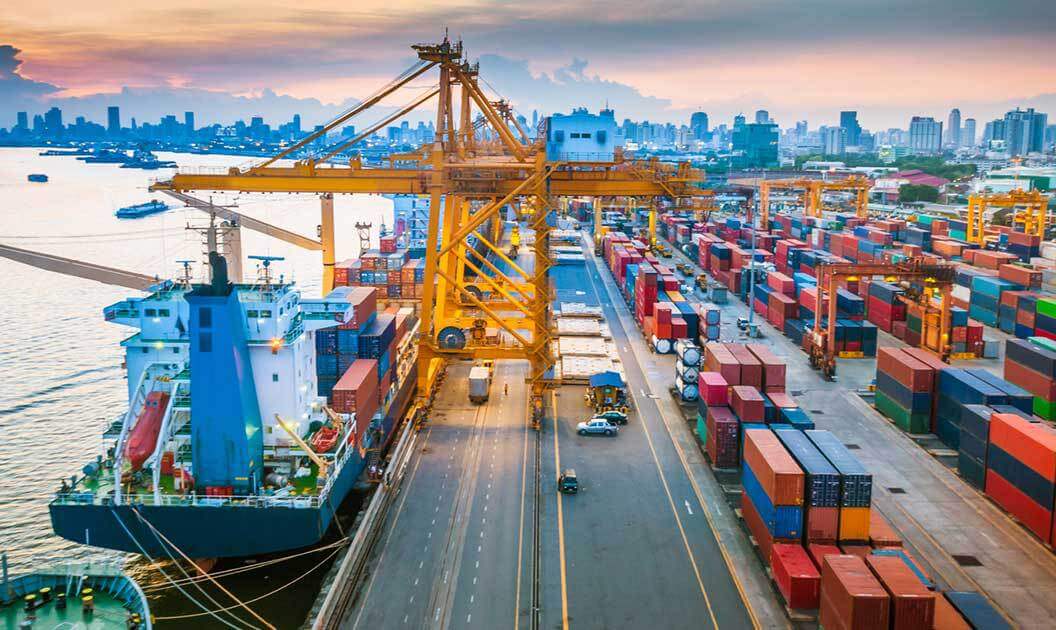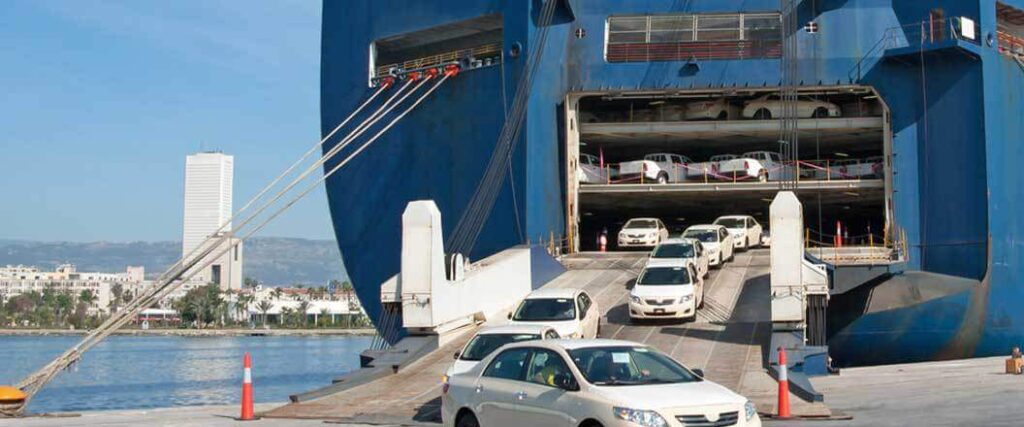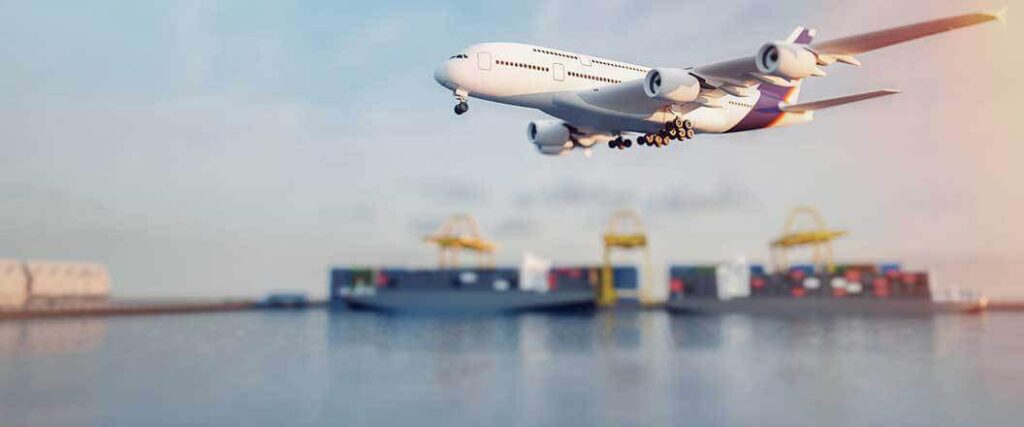
There are many types of goods transported by sea every year. Whether it’s usual household items or equipment used for construction sites, cargo ships are responsible for getting our most essential items to our fingertips. There are also some enjoyable benefits associated with shipping goods using ocean transport.
According to the International Freight Forwarding Association (IFA), goods transported by sea fall into one of the five following categories:
While transit times can be long, you’ll find ocean shipping to be both efficient and a very economical way to ship goods.
We’ll show you how these goods are transported by sea and go into detail about each benefit of ocean shipping.

According to the World Economic Forum, 90 percent of the world’s goods are shipped using maritime transportation as of 2021. This means that a variety of different goods sail over international waters regularly.
Some of the most popular goods that travel overseas include:
Rather than identifying ocean freight by its commodity name, freight is instead put into one of five different categories. Each category is made up of numerous commodities that are similar to one another.
Roll on/roll off (RoRo) freight is the name given to any type of cargo transported using a RoRo vessel. This type of freight largely consists of everyday vehicles like cars and trucks. However, RoRo goods can include other kinds of vehicles, each with very unique purposes.
This includes:
RoRo vessels are especially suited to transport these vehicles and many others. As giant floating parking garages, vehicles simply need to be parked and secured to the deck during their journey overseas. If you need to import or export a vehicle, RoRo shipping is a great service to explore.
Break bulk cargo is a form of cargo that typically can’t be transported within a regular cardboard box or cargo container. Instead, break bulk items are kept in other types of containers while they’re being transported from port to port.
The containers that break bulk freight can be transported in are:
Freight that’s considered break bulk includes some of the following:
General cargo ships are the vessels of choice when it comes to transporting break bulk freight overseas. This break bulk cargo is convenient to ship because it rarely has to be broken down. Because of this, unloading doesn’t require reassembling once the freight arrives at the final destination.
Our article on break bulk shipping will provide you with more information about this specific type of ocean shipping service.
Dry bulk cargo is made up of dry goods that are transported “loosely” or without any type of container. Instead, this type of freight is stored within the cargo hold of a dry bulk carrier during transit.
There are numerous types of dry bulk cargo, with some of the most popular consisting of:
Because dry bulk cargo doesn’t fit into a box or any other type of container, the loading/unloading process is very unique. The loading/unloading of dry bulk freight can be completed in one of two ways:
Regardless of the system that’s used, dry bulk goods often have an agricultural or industrial use.
Liquid bulk freight shares many similarities with dry bulk freight. For one, this type of cargo isn’t transported within the confines of bottles or similar types of containers. This form of cargo is shipped “loosely” within the confines of tanker ships.
Oil is a common type of liquid bulk that’s shipped by sea, but some others include the following:
Using various lines and hoses, tanker ships are loaded and unloaded by pumping liquids in and out of the cargo hold.
The most common type of freight that goods transported by sea fall under is container cargo or containerized freight. Cargo containers are usually stacked wall to wall and from floor to ceiling with palletized or non-palletized freight.
Other types of goods, like certain cars and trucks, can be transported within containers as well. This makes for a great alternative if you don’t want to ship your vehicle as RoRo freight. Temperature-sensitive goods can be transported in reefer containers.
Loading and unloading containerized freight are fairly unique compared to the other types of goods we’ve mentioned. Containers are loaded/unloaded with the use of cranes that move them between the ship and the dock.
Our article on the types of ocean freight shipping services will give you more information about the services needed to ship container cargo and the other types of goods transported by sea.


Ocean freight shipping is extremely important because of how reliable it is. With shipping lines connecting ports and countries all over the world and over 55,000 merchant ships in operation, ocean freight shipping is the number one transport mode in international trade. Ocean freight shipping is also extremely efficient and economical compared to other transportation methods.
Ocean freight shipping is efficient because massive quantities of freight can be transported at one time. Regardless of what type of cargo they’re designed to transport, cargo vessels of all varieties are designed to have plenty of space for freight.
The table shows how much freight vessels can carry based on their maximum deadweight tonnage (DWT). It’s important to note that vessels can vary in size which also affects how much DWT they’re able to withstand. For the table, we put the maximum DWTs for the largest of each vessel type.
| Vessel | Maximum DWT |
| RoRo Vessel | 50,000 |
| Dry Bulk Carrier | 200,000 |
| Tanker Carrier | 250,000 |
Cargo container vessels load capacities are better measured in twenty equipment unit (TEU) rather than in DWT. Our next table has the TEU maximums for each type of container vessel.
| Vessel | Maximum TEU |
| Feeder | 3,000 |
| Panamax | 14,000 |
| Suezmax | 18,000 |
| Malaccamax | 30,000 |
With these DWT and TEU maximums, transporting goods internationally by sea is more efficient than any other mode of transportation.
Ocean freight shipping is, for the most part, cheaper than international air shipping. Depending on the freight and carrier you use choose, you can expect to pay anywhere between four to six times less than you would shipping by air.
Some forms of ocean freight transport like RoRo can be quite expensive. However, you could easily rectify this problem by shipping vehicles using a cargo container rather than a RoRo vessel.
Look into our article on the types of ocean containers to discover how you can transport any type of freight by sea.
There are many benefits that you’ll reap when having your goods transported by sea. That said, there are a few downsides to using this form of shipping that you should be aware of before booking a shipment.
Transit times for ocean freight can be extremely long. It can take anywhere between 20 days to just over a month for goods transported by sea to get to the country they’re supposed to arrive at.
There are other factors that could lengthen transit times such as:
Transporting goods by sea is a reliable method of moving freight, but it’s one that requires patience.
It’s difficult to track freight once it’s inside a container and loaded on a ship. Goods can arrive at the port and you won’t know it until they’re loaded onto a trailer. This can make it difficult to predict when you or your customer should expect their goods to arrive.

Although international air shipping is pricey and will be unable to transport large quantities of freight, this transportation method has a few alternatives that are beneficial. Many importers and exporters use this shipping option when they only need to ship smaller quantities of freight.
Some benefits of international air shipping are:
Short transit times are beneficial when shipping goods within a small time frame is a necessity. There are also numerous airports in many countries around the world. This means that air freight can be sent to an airport that’s already close to the final destination, further shortening transit times. Tracking is also much easier since freight goes straight from the plane to a truck.
Check out our article on the 3 types of air freight shipping services to discover more detailed information about this transportation service.
USA Freight Forwarding Services can provide you with whatever type of international shipping service you desire. Our connections with numerous ocean freight carriers will allow us to organize a shipment that will get your goods transported by sea. We also have connections with international air providers that can perform fast and easy transportation.
Consulting is another service that we offer to our customers. Transporting freight internationally is a very difficult process and through our consulting sessions, we guarantee that you’ll have answers to all of your questions.
If you’re ready for one or more of these services, then contact one our team members or call us at (866) 941-8081 for help and more information.
